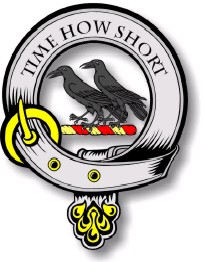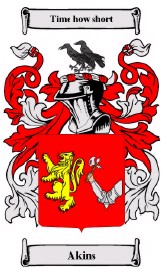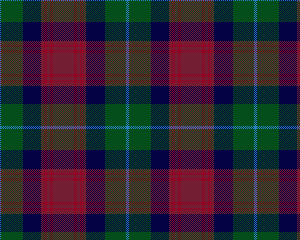|

Although of
remote origin and no longer in possession of any great estates, the Clan
Akins represents a significant portion of what has grown into a worldwide
Scottish community. Whether in Great Britain, Northern Ireland, the United
States, Canada, Australia, or New Zealand, wherever the Scots have settled,
there can be found descendants of our ancient Scottish Clan.
Rooted
among the common folk, heirs of the early Picts and Scots who first
inhabited Scotland during the time of the Roman Empire, of of the Nordic
invaders who came there in the Middle Ages, the earliest origins of the Clan
Akins belong to the era of the Viking rulers who controlled the isles off
Scotland's coast. from Shetland to the Isle of Man.
First
occuring as a place-name, Akin is found in the west coast of Scotland on the
Hebridean Isle of Skye. There in the 13th century, the Viking leader King
Hakon IV of Norway swept with his invading army in a fleet of longboats on
his way to the final defeat of the Norsemen at the hands of Alexander III,
King of Scots, at the battle of Largs in 1263 AD.To commemorate his passage
through this region, the narrow strait between the Isle of Skye and the
Scottish mainland was afterwards known as Kyle Akin, from the Gaelic Caol
Acain meaning "the Strait of Hakon" in the native Celtic language of the
Scottish people.
This
area is home to the Skye village of Kyleakin, named for the strait on which
it is located. Begun as a planned community in 1811, the area is also the
site of Dun Akin castle, an 11th century fortress, now in ruins, long held
by the Mackinnon Clan through the marriage of their ancestral chief,
Findanus, to a Norse princess known as "Saucy Mary," daughter of King Hakon
I of Norway.
 As a
surname, the first recorded appearance of its use occurs in the year 1405 in
the court records of a Scottish sea merchant named "John of Akyne" who
sought restitution for having been kidnapped by Laurence Tuttebury of Hull,
England, who pirated his ship and goods. Other instances of its use occur in
the early records of Scotland where the surname is seen to have undergone a
variety of transformations in spelling, accounting for the many variant
forms of the name still seen today.
As a
surname, the first recorded appearance of its use occurs in the year 1405 in
the court records of a Scottish sea merchant named "John of Akyne" who
sought restitution for having been kidnapped by Laurence Tuttebury of Hull,
England, who pirated his ship and goods. Other instances of its use occur in
the early records of Scotland where the surname is seen to have undergone a
variety of transformations in spelling, accounting for the many variant
forms of the name still seen today.
Among these early records we find mention of William Ackin, who was a
witness in the parish of Brechin in the year 1476. John Eckin was a tenant
under the Bishop of Aberdeen in 1511. John Ackyne served as bailie of
Stirling in 1520. Robert Aykkyne was admitted to the burgess of Aberdeen in
1529. Bessie Aiken of Leith was found guilty of Witchcraft in 1597, narrowly
escaping execution. David Akin of Aberdeen was an early passenger to
America, settling in Newport, Rhode Island with his wife and family before
1664. A John Aiken was among those who fought under the banner of the
Covenant at the Battle of Bothwell Bridge in 1679. Alexander Aiken of
Bo'ness, West Lothian, was among the Scots colonists who took part in the
ill-fated Darien expedition in 1699.
In
1609 Ireland's northern province of Ulster was opened up for colonization as
part of an enterprising scheme by two opportunistic businessmen from
Ayrshire, Scotland, by the names of Montgomery and Hamilton. They
successfully petitioned King James VI & I for the release of an imprisoned
Ulster chieftain, Con O'Niell, in exchange for thousands of acres of land in
northern Ireland. These were cleared of the former landlord's native
tennants in order to make way for settlement by Protestant colonists from
Scotland. Members of the Clan Akins were among the thousands of Scots who
settled in that troubled region during that period.
 With the revolt against the Stuart King, Charles I, during the English civil
war, much of the historical information of the Clan Akins was lost when
Oliver Cromwell's ships carrying records of all the clans as spoils of war
sank off the coast of Berwick on Tweed. After Charles II was restored to the
throne, he instituted a public regifter of all the clans between 1672 and
1676. However the then chief of the Clan Akins having emigrated to Ulster as
an exiled supporter of Charles I and later having settled in the American
colony of Maryland where he died in 1669, he failed to re-establish his
right to the Name and Arms of Akins and as a result the chiefship fell into
a period of dormancy lasting for more than three hundred years.
With the revolt against the Stuart King, Charles I, during the English civil
war, much of the historical information of the Clan Akins was lost when
Oliver Cromwell's ships carrying records of all the clans as spoils of war
sank off the coast of Berwick on Tweed. After Charles II was restored to the
throne, he instituted a public regifter of all the clans between 1672 and
1676. However the then chief of the Clan Akins having emigrated to Ulster as
an exiled supporter of Charles I and later having settled in the American
colony of Maryland where he died in 1669, he failed to re-establish his
right to the Name and Arms of Akins and as a result the chiefship fell into
a period of dormancy lasting for more than three hundred years.
In
Ireland the name is common only in Ulster, where the Scottish immigrants
settled in the 17th century; but here new variations in spelling began to be
seen. Aikins in Co. Armagh; Akins in Co. Monaghan; Eaken in Co. Tyrone;
Eakin in Counties Derry and Down; Eakins in Co. Cavan; Ekin in Co. Donegal;
and Ekins in Co. Sligo. In Co. Antrim where the name was most common, it was
found to be most concentrated in the area northwest of Ballymena in the mid
19th century. Dr. Joseph Aiken published a poetic work in 1699 entitled
"Londonderias, Or a Narrative of the Siege of Londonderry."
The
Clan name under its various spellings continued to be prevalent in Scotland,
being among the 100 most frequently encountered surnames in 19th century
records; ranking 90th in order of occurance, with a per capita ratio of 20
individuals per 10,000 bearing the surname, mostly in Lanarkshire and the
surrounding counties, totaling an estomated 5,592 Scots bearing the name in
one of its many forms. Variations of the name were said to have been common
in the parish of Ballantrae, as well as in the counties of Aberdeen, Fife,
Lanark, Perth, Angus, Renfrew, Ayr, Dumbarton, Stirling and the Lothians.
Among the many friends of Scotland's national poet, Robert Burns, was an
Ayrshire gentleman by the name of Robert Aiken, who Burns mentioned in a
number of his works, including the prelude to "The Cottar's Saturday Night,"
and "Holy Willie's Prayer," as well as his "Epitaph for Robert Aiken, Esq."
and "The Farewell."
When
the British government began to oppress the Scots colonists who had settled
in Northern Ireland with heavy taxes and religious persecution, many of them
left fleeing to North America as a safe haven where they might start new
lives for themselves. It was in this way that many members of the Clan Akins
came to America. Between 1717 and 1776, some 250,000 Ulster Scots left
Northern Ireland mainly for the United States. In the year 1729 more than
6,000 arrived at the port of Philadelphia alone. 100,000 more came to
America in the two decades following the Revolutionary War.
Thus
with a total of some 11 million citizens of Scottish and Ulster Scots
descent, the United States can claim to have the largest portion of the 28
million Scots worldwide, over twice as many as in Scotland itself, which has
a total population of only five and a half million; and it is in the United
States that the Clan Akins is its strongest.
According to recently gathered statistics from the Social Security
Administration, the total number of individuals bearing the Clan name in its
three most common forms accounts forsome 53,650 persons. The spelling of
Akins being the most usual, with a count of 23,586 individuals, followed by
Aiken, with 17,924 persons, and Akin with 12,140 people bearing that form of
the name. |

